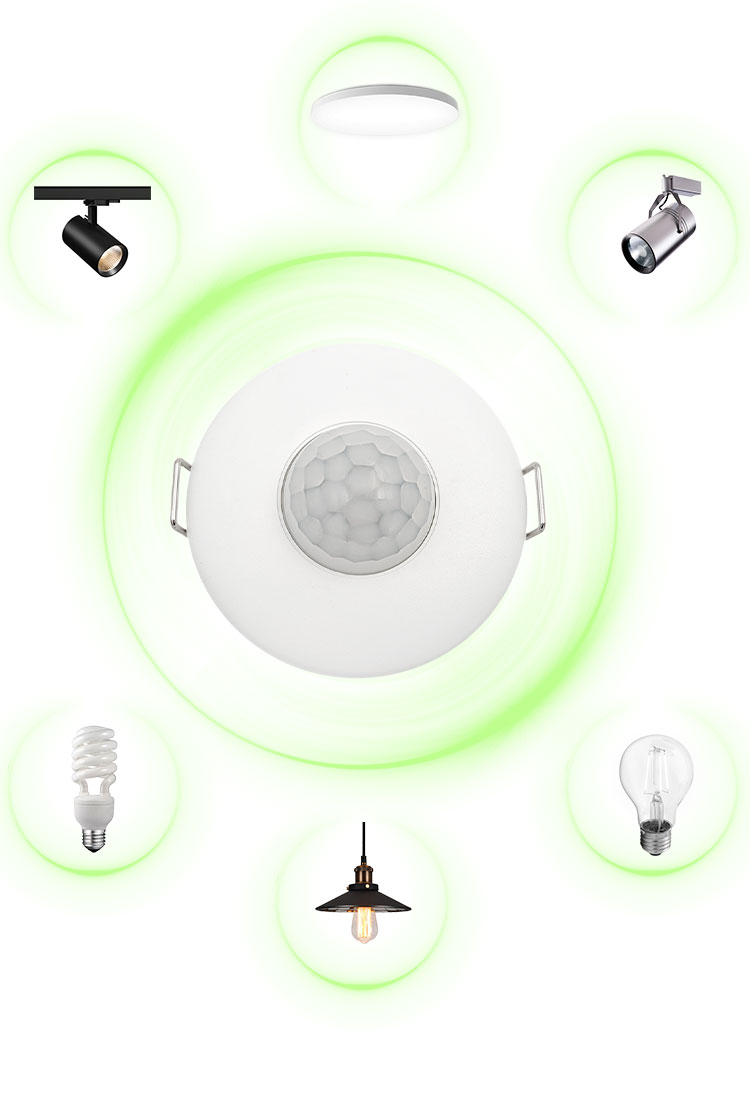

Infrared Sensors: The "Invisible Guardian" of Smart Living
Introduction
When you approach a shopping mall entrance, the door automatically opens; when you get up at night, the hallway lights turn on by themselves—behind these conveniences lies the infrared sensor . Like a pair of "invisible eyes," it detects infrared radiation to sense the presence of people or objects, and is widely used in security, automation, smart homes, and more. Today, we’ll delve into the principles, types, and real-world applications of infrared sensors.
1. What Is an Infrared Sensor?
An infrared sensor is an electronic device that detects changes in infrared radiation (heat) to sense the movement of objects or humans.
(1) Core Principles
Infrared Radiation: All objects with a temperature above absolute zero (-273°C) emit infrared rays. The wavelength of infrared radiation from the human body (about 36°C) typically ranges from 5–20 micrometers.
Sensor Reception: Infrared sensors are equipped with pyroelectric elements (PIR) or infrared receivers to capture changes in infrared radiation and convert them into electrical signals.
(2) Example Scenarios
Automatic doors sense approaching people → trigger opening.
Security cameras detect unusual movement → send alerts
2. Common Types of Infrared Sensors
(1) Passive Infrared Sensor (PIR)
Principle: Detects changes in infrared heat radiation emitted by humans or animals (passive reception, no active signal emission).
Features: Low power consumption, cost-effective, but less sensitive to stationary targets.
Applications:
1.Motion-activated lights
2.Security alarm systems
3.Smart toilet auto-flushing
(2) Active Infrared Sensor
Principle: Uses an infrared emitter to send out infrared light, then detects changes in reflected light (similar to radar).
Features: Can detect stationary objects but consumes more power.
Applications:
1.Touchless faucets
2.Elevator anti-pinch devices
3.Industrial production line counting
(3) Infrared Thermal Imager
Principle: Converts infrared radiation into visual thermal images to display temperature distribution.
Features: Ideal for low-light or complex environments.
Applications:
1.Medical thermal imaging diagnostics
2.Power equipment inspections
3.Fire rescue operations
3. Practical Applications of Infrared Sensors
(1) Smart Homes
Automatic lighting: Lights turn on when someone enters a room (e.g., Xiaomi motion sensor).
Energy-saving control: Automatically turns off AC/TV when no one is detected.
(2) Security and Surveillance
Intrusion alarms: PIR sensors trigger cameras to record and send alerts.
Pet monitoring: Tracks pet activity.
(3) Industrial Automation
Production line detection: Infrared photoelectric sensors count products.
Equipment safety: Monitors high-temperature machinery to prevent failures.
(4) Healthcare
Non-contact thermometers: Infrared ear or forehead thermometers.
Sleep monitoring: Detects breathing rates (e.g., smart mattresses).
4. How to Choose an Infrared Sensor?
1. Select based on detection distance: Infrared sensors typically have a detection distance of 1-10 meters. For home use, choose a sensor with a detection distance of 3-5 meters. Industrial applications require a longer detection distance.
Response time: The faster and more sensitive, the better. Security applications require rapid response. Therefore, if the sensor is to be used for security purposes, a highly sensitive sensor should be selected.
2. Response time: The faster and more sensitive, the better. Security applications require rapid response. Therefore, if the sensor is to be used for security purposes, a highly sensitive sensor should be selected.
Select based on operating voltage: 5V/12V/24V/220V. In China, the household voltage is 220V. Voltage varies by country.
3. Interference resistance: If you need to avoid interference from heat sources such as sunlight or heating, choose a model with a filter function.
5. Future Trends: Smarter and More Integrated
AI integration: Algorithms distinguish humans, pets, and false triggers (e.g., Aqara presence sensor).
Multi-sensor fusion: Combines infrared + radar for higher accuracy.
Miniaturization: Embedded in wearables (e.g., AR glasses for gaze tracking).
6.Conclusion
Though small, infrared sensors are key to enabling "touchless interaction." From energy savings to enhanced security, they are quietly transforming our lives. As technology advances, infrared sensing will become even more precise and intelligent—perhaps one day, your home will truly "understand" your needs.








